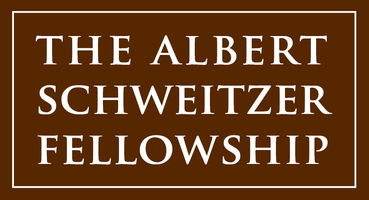May 18, 2023. Carrie Alspaugh, MD.

In the United States, we produce enough food for all Americans. However, striking disparities in food acquisition and distribution persist in this country, and food waste is an important contributor to this societal failure. According to the USDA, 30-40% of our country’s food is being wasted. As a physician, a student at UNC Gillings School of Global Public Health, and an NC Schweitzer Fellow, I have learned about the need for clearer expiration date food labeling to simultaneously reduce food waste while maintaining food safety.
Expiration dates on food products occur for two reasons. The first is for food safety, and these labels are noted by the terms “Use By”. The second is to address food quality, and these labels are often noted by “Best If Used By”. Most consumers are not aware of this distinction, and many foods maintain safety and quality well after the “Best If Used By” date. Therefore, 84% of people mistakenly throw away food that is safe to eat but may not be at peak quality. Approximately 20% of food waste at the consumer level is contributed to by the issue of confusing date labelling, as most food labels deal with food quality and freshness, not food safety.
Presently, there is no consistency or federal guidance on these date labels, except for infant formula and baby food. Each state has its own guidance which can create confusion as food crosses state lines. For example, North Carolina only requires these dates for shellfish. This results in variation among manufacturers as well as consumer confusion. With education, the number of consumers who understood these terms increased from about 50 % to 82%.
Also, many food banks and similar donation centers do not allow food to be donated past the “best if used by” date. Therefore, much food is wasted and not accessible for those people most in need. Standardizing food date labels nationally could become a cost-effective way of addressing food waste in America. Every year, 582,000 tons of food waste could be saved, which translates into a $2.41 billion savings nationally. Furthermore, consumers would directly save $29 billion. By this clarification, greenhouse gas emissions would decrease by 1.5 million tons annually.
My husband is an Infectious Diseases Doctor, so food safety is something we take seriously in our home. In the past few months, we have saved over $100 a month by purposefully addressing our own food waste, including using food that is still safe, but eaten after the “Best If Used By” (peak quality) date.
The issue of label clarity has been extensively studied by the European Food Safety Authority, resulting in clear guidance on labels for various food and beverage products. The goals of these international initiatives are to optimize food availability by minimizing food waste, while preserving absolute food safety. We need better national guidance for date labels on food to bring clarity and education to this misunderstood and confusing issue in the United States. By establishing standardized US food date labelling, there would be multi-layered benefits with cost savings for consumers, businesses, and the government while feeding more people in a safe and environmentally friendly way. Bills have been introduced in the House and Senate in the past two sessions with growing interest for clearer nationwide food date labels. Write your congressmen and senators and encourage them to support and co-sponsor nationwide food date labelling. Also, stop and carefully consider before you throw out food.
Carrie Alspaugh, MD
2022 NC Schweitzer Fellow
UNC Gillings School of Public Health
